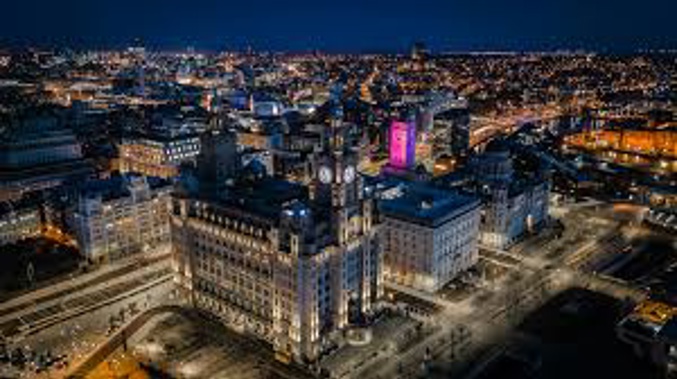
Tucked between North Wales and the serene good looks of the Lake District, gritty, vital Liverpool provides an indelible and grounded dose of "real" urban England. It proved to be one of my favourite destinations on my whistle-stop romp with Trafalgar’s Real Britain tour. Yes, Beatles fans flock to Liverpool to learn about the Fab Four's early days, but the city’s appeal extends far beyond those towering music legends. There’s a wealth of excellent free museums and a fast-evolving skyline, where storied old red-brick maritime warehouses dramatically mingle with glassy new skyscrapers and architectural flourishes on the recently gentrified Royal Albert Dock harbourfront, as ferries chug across the Mersey. Overlay all of that with the distinctively earthy, assertive charm of the Liverpudlians.
History-hounds are richly blessed in Liverpool, but first things first, I felt duty bound to tick off the headline sights on the Beatles’ parade. John and Paul's boyhood homes are now both restored, circa 1950s, and open for visits. It's a worthwhile pilgrimage for the faithful. For a wider overview with all things Beatlemania, I took a "Magical Mystery" bus tour, which hits the lads' homes (from the outside and a variety of pilgrimage sites. The Eleanor Rigby grave site is located in St. Peter's Churchyard. It’s also where McCartney and Lennon first met at a church fete.
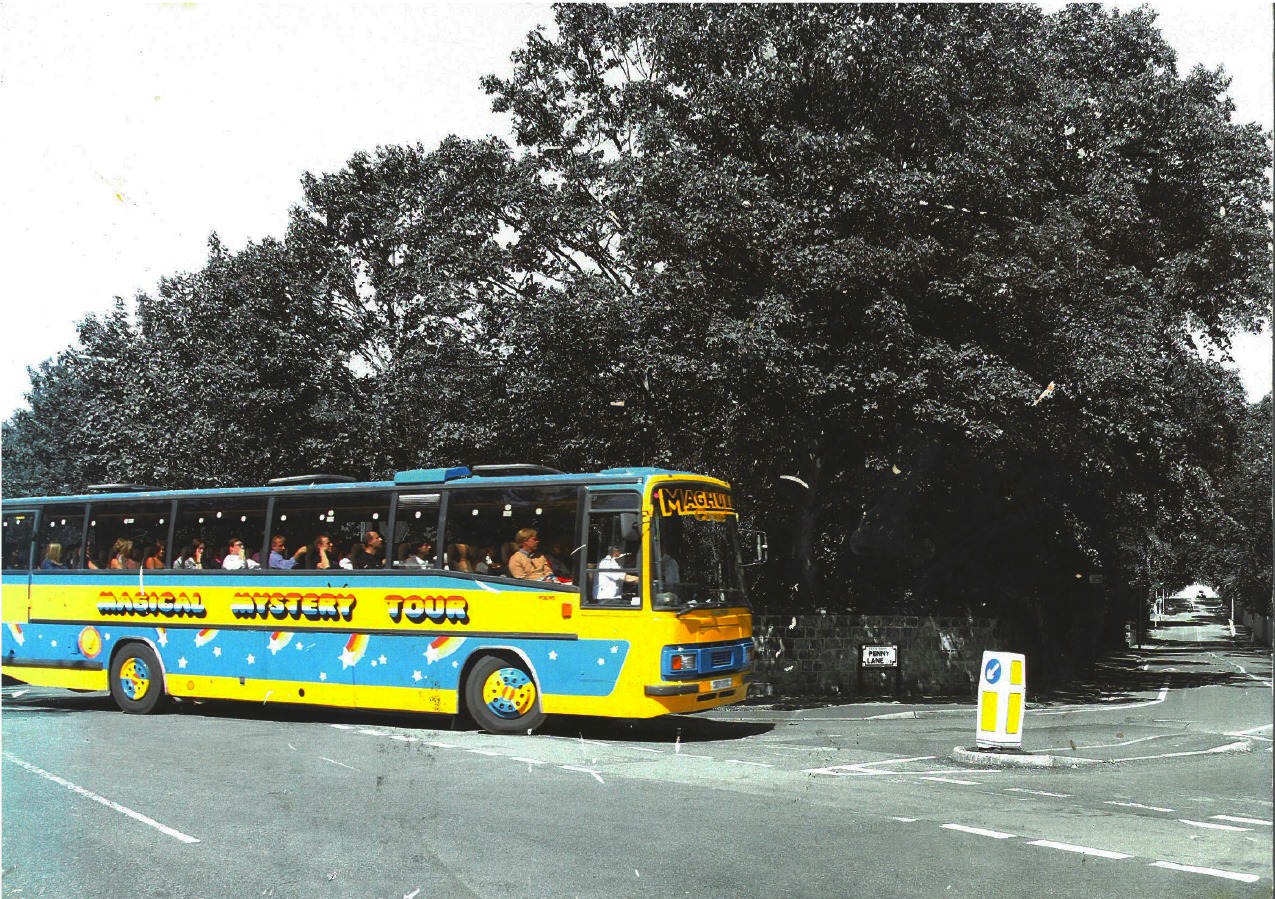 Magical Mystery Tour turning into Penny Lane. Photo / Cavern Club
Magical Mystery Tour turning into Penny Lane. Photo / Cavern Club
Once part of McCartney and Lennon's teenage routine, Penny Lane is quiet suburban street in Liverpool, worth a photo-stop (the street signs have to be regularly replaced). And the Strawberry Field site is particularly evocative. It was donated to the Salvation Army in 1936 – a large Victorian house which became a home for the city’s most vulnerable children. The gardens at Strawberry Field were a place of peace and refuge. It was in these gardens that Lennon as a child could play with friends, climb trees and reflect, serving as the inspiration for another Beatles anthem. In the heart of town, beckoning like Beale Street in Memphis, the narrow, bar-lined Mathew Street is ground zero for Beatles fans and its swag of themed bars.
This of course is where the Fab Four made their name in the original Cavern Club, deep in a cellar along this street. While that's long gone, a mock-up of the historic nightspot (built with many of the original bricks) lives on a few doors down. Still billed as "the Cavern Club," this noisy bar is worth a visit to see the reconstructed cellar, pumping with a roster of Beatles tribute bands. On the other side of the lane, the Wall of Fame. Created by Gerry Marsden to celebrate the 40th anniversary of the Cavern Club, every brick represents an artist or band who played at the original Cavern Club, and in the rebuilt club. It’s a who’s who of music royalty, from Adele and Suzi Quatro to Oasis and Jim Morrison.
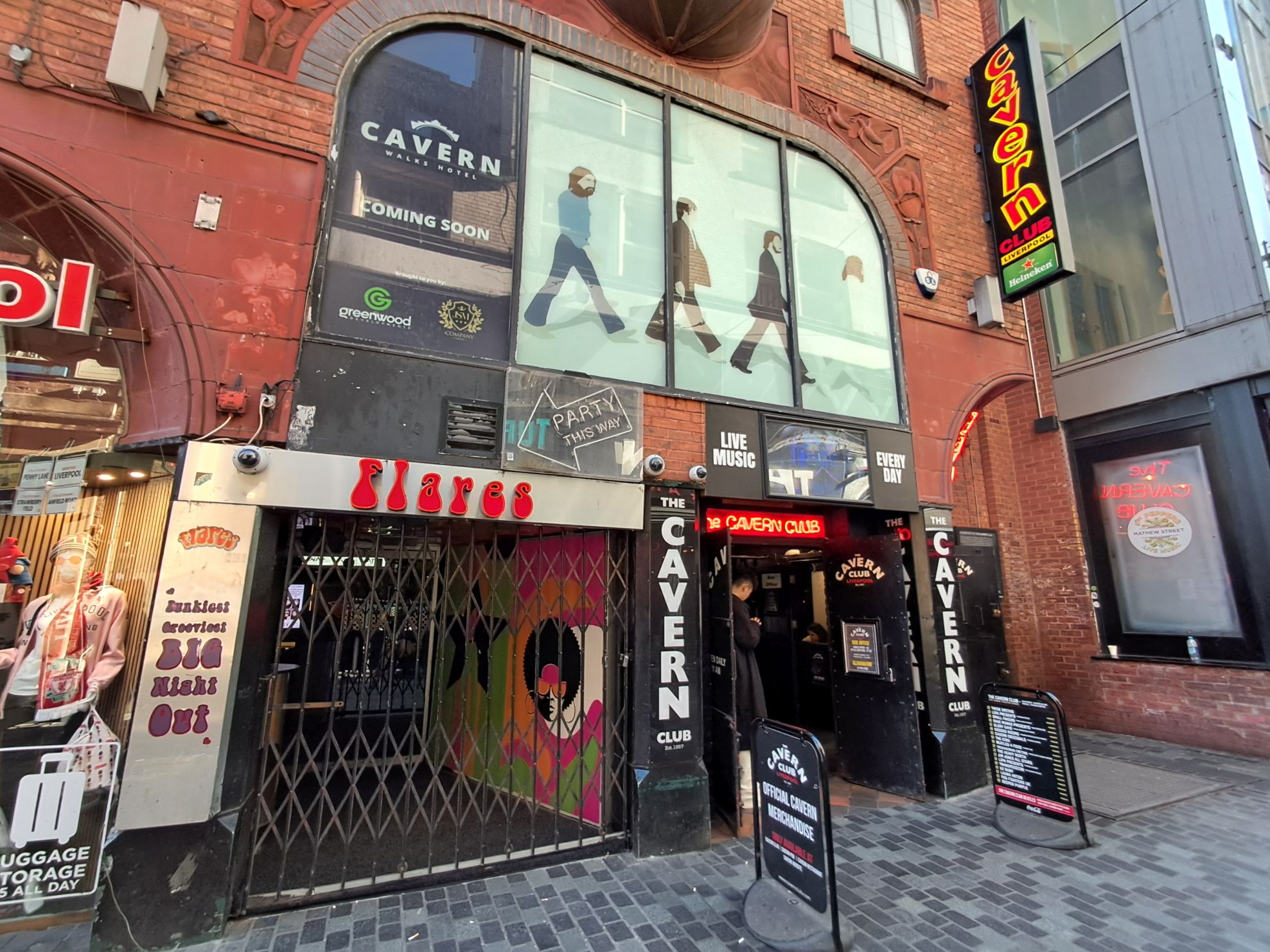 Cavern Club entrance. Photo / Mike Yardley
Cavern Club entrance. Photo / Mike Yardley
Back at Royal Albert Dock, Liverpool's most popular museum is unquestionably The Beatles Story, stacked with plenty of genuine memorabilia to keep the fans happy. The museum houses a full-size replica Cavern Club (which was actually tiny) and the Abbey Rd studio where the lads recorded their first single. I also spotted George Harrison's crappy first guitar – which is now valued half a million quid! The museum’s audio guide is narrated by John Lennon's sister, Julia Baird. Further down the waterfront, don’t miss a fantastic life-size bronze sculpture of the world’s most famous foursome. It’s a de rigueur selfie-spot!
In the mid-19th century, Liverpool was known as 'the New York of Europe' because it was such a commercial powerhouse. Not only was the port a mecca for international freight, but Liverpool was the major gateway for emigrants heading off into the big blue to begin new lives in North America and Australasia. I actually spotted an unloved old stone building emblazoned with New Zealand House on its exterior. Back in the day, its core business was migration and meat. Today, Hooters has taken up residence on the ground floor.
 Hooters at New Zealand House. Photo / Mike Yardley
Hooters at New Zealand House. Photo / Mike Yardley
See Liverpool the way seafarers of old once did: from the water. Mersey Ferries has been eulogised by generations of Scousers, but it remains very much a fleet of working boats. There are sightseeing cruises throughout the day or alternatively, join commuters during the morning or evening rush hour for the 10-minute hop from Pier Head to Woodside. Look out for the Dazzle Ferry, the exuberant livery designed by Sir Peter Blake, the artist behind The Beatles’ Sgt. Pepper’s Lonely Hearts Club Band sleeve.
Royal Albert Dock, where tourists now gravitate, was a trailblazing piece of construction when it opened in 1846. What were once mighty redbrick warehouses now house museums, galleries, shops and restaurants. It’s a great spot to watch the boats putter by. Amid the dazzling array of museums, the Merseyside Maritime Museum at the Royal Albert Dock is a cracker. It charts the story of the city’s seafaring past from the 13th century onwards. Inside are exhibitions on the sinking of the Titanic, the loss of the Lusitania during the First World War, plus happier episodes from modern nautical history, as well as a staggering fleet of model ships. Nearby, the International Slavery Museum which doesn’t flinch from fronting up to the city's role in the African slave trade.
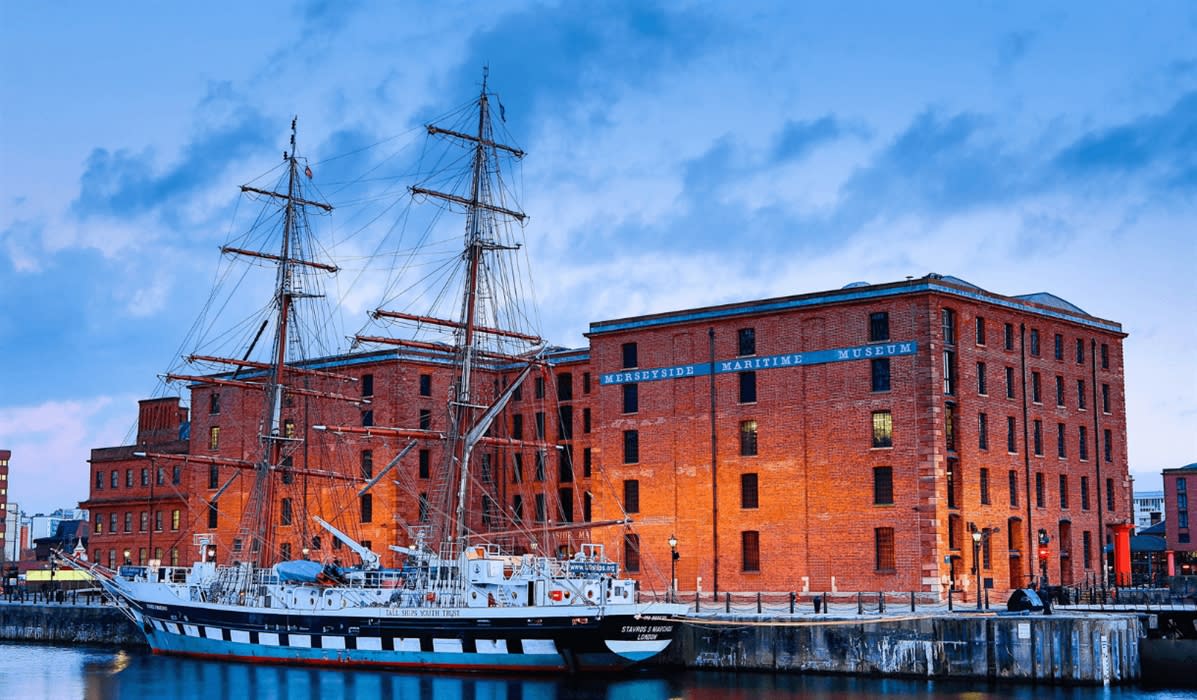 The Maritime Museum at Royal Albert Dock. Photo / Visit Liverpool
The Maritime Museum at Royal Albert Dock. Photo / Visit Liverpool
Soaking up the sunshine, I strolled along the harbourfront to Pier Head, home to a creamy cluster of showpiece Edwardian buildings known as the Three Graces. The middle of the trio is the ornate Cunard Building, styled like Italian palazzo, which was once HQ to the Cunard Steamship Line. The old first-class passenger lounge on the ground floor is now home to the British Music Experience.
If you have a head for heights, Liverpool’s Anglican cathedral is a structure of superlatives: the UK’s biggest religious building, it’s home to the country’s largest pipe organ and with the highest and heaviest ringing peal of bells in the world. And its tower has one of the best views in Liverpool; take two lifts to the top and, on a clear day, all of Merseyside extends before you, from traffic on the Mersey to the faraway silhouette of the Blackpool Tower, 80km away. It was designed by Sir Giles Gilbert Scott who also created the iconic red telephone box. His grandfather, Sir George, was the prolific Gothic Revival architect who designed Christ Church Cathedral.
At the other extreme, head to St Luke’s Bombed Out Church, which was damaged during the 1941 Liverpool blitz and has stood roofless ever since. After lying derelict for more than 60 years, it has been reborn as an open-air cultural space for theatre, dance, cinema, visual art and regularly staged craft markets.
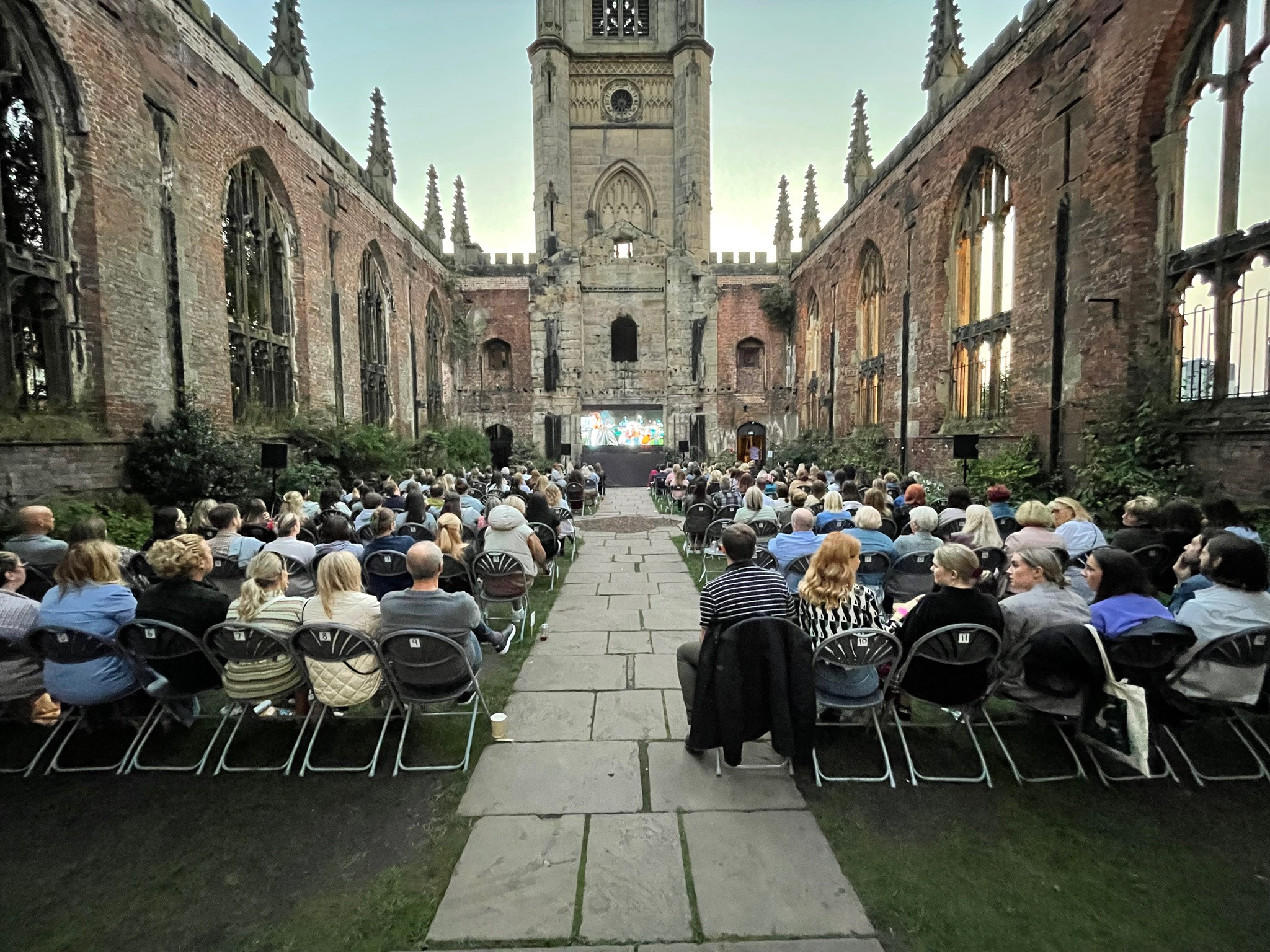 St Lukes Bombed Out Church. Photo / Supplied
St Lukes Bombed Out Church. Photo / Supplied
There are some sobering reminders to Liverpool’s darker days. A sullen Victorian building whose facade bears the title ‘Sheltering Home for Destitute Children’ might not be the place you’d instinctively look to for fine dining. Nonetheless, if some posh local nosh whets your appetite, this building is home to Art School restaurant: one of Liverpool’s shining culinary stars, with linen-clad tables under a glass atrium. Lancashire-grown produce dominates the menu, plus seafood from over the border in North Wales. Served in the Lantern dining room, the tasting menu is particularly good, spanning Cumbrian salt-aged roast duck, Liverpool Bay seabass and Loch Fyne scallops.
The stately streets of the Georgian Quarter are prime territory for a pub crawl, beyond the Beatles bling of Matthew St. the pub to end all pubs, however, is the staggeringly ornate Philharmonic Dining Rooms, adorned with copper panels and mosaic floors. In the men’s loos, you’ll find palatial urinals made of pink marble. With the biggest Irish population in England, Liverpool enjoys a similar vibe to the Temple Bar district in Dublin, where the locals are very chatty and outgoing over a few pints.
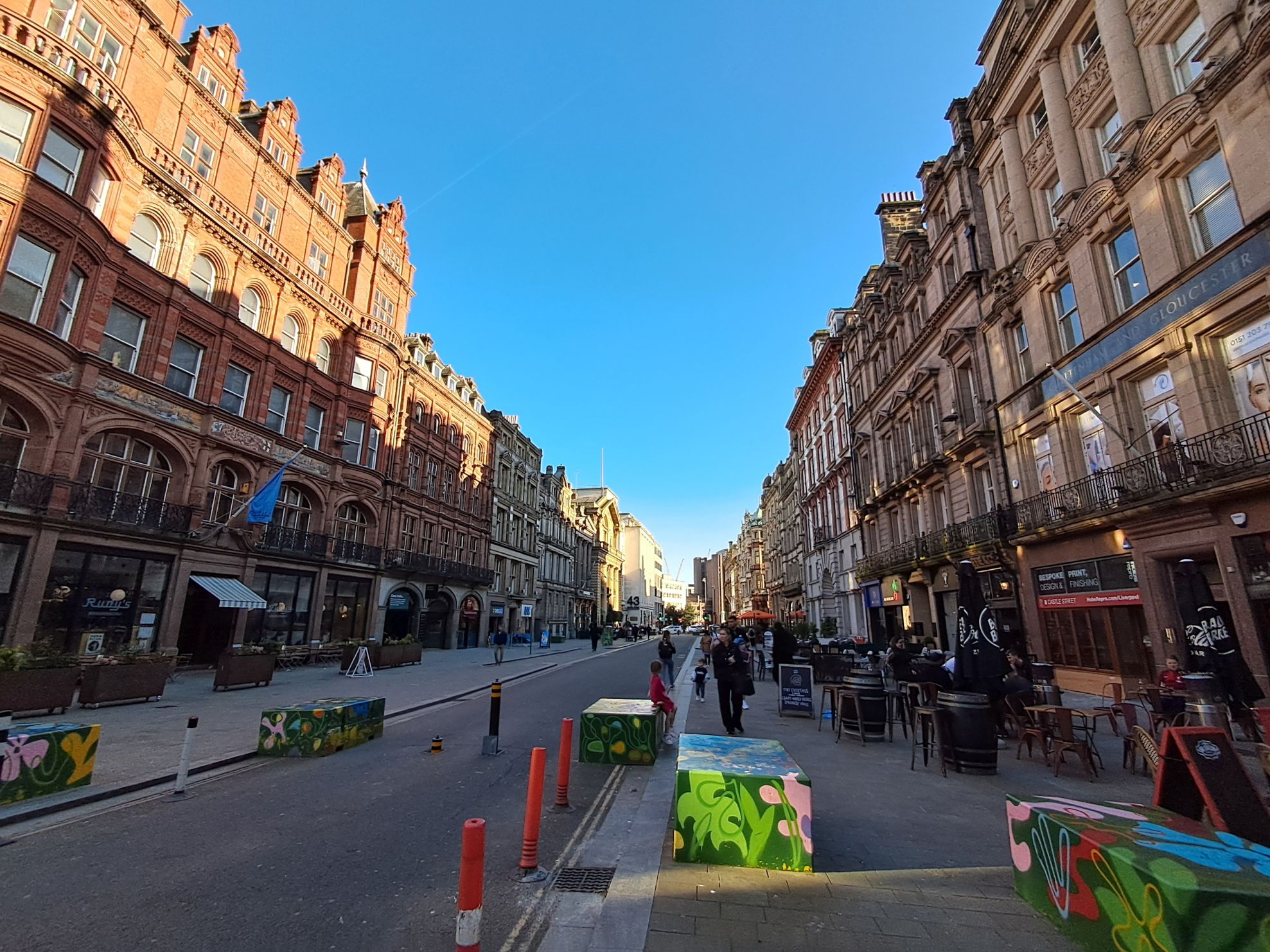 George St Quarter. Photo / Mike Yardley
George St Quarter. Photo / Mike Yardley
I also noticed that female Scousers love getting dressed up. Jeans and a nice top won’t normally cut it when it comes to a night out in Liverpool. They seem to treat a night out, as if they’re off to the Met Gala. Don’t be surprised if you spot quite a few ladies going about their business in the daytime with curlers in their hair. My Trafalgar travel director Selene also pointed out to us the current trend among young women – the Scouse brow. You won’t miss these extreme facial statements – cartoonishly oversized eyebrows! They are everywhere.
From iconic sites and hidden gems to authentic cultural encounters, Trafalgar’s Real Britain tour serves up a dazzling array of headline attractions, experiences and insights, all seamlessly stitched together over 6 days. In addition to guided sightseeing, there’s ample free time for personal discovery. Optional add-ons include local theatre shows, walking tours and even seasonal events like the Royal Edinburgh Military Tattoo. 2026 pricing for the tour is from $3,056pp. For full details head to trafalgar.com/en-nz/tours/real-britain
Mike Yardley is Newstalk ZB’s resident traveller and can be heard every week at 11.20am on Saturday Mornings with Jack Tame.
Take your Radio, Podcasts and Music with you









